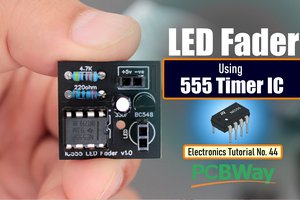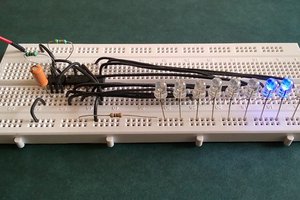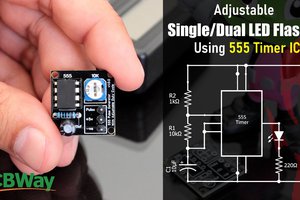Contactless Voltage Detector
https://www.youtube.com/embed/Bw11igeWlEA
3 Ways to Build Your Own Contactless Voltage Detector For Less Than a Dollar
Introduction
------------
When electricity is not properly handled, it results in electrical shocks with a nasty experience; which is why safety must come first when working with electricity or electrical devices. In order to avoid injury, prior to starting work on an electrical box such as an AC mains switch-board or a power supply, you must first verify there is no AC voltage. It is really hard to completely isolate a device from the main supply; so, how can you be sure that there's no voltage remaining?
There are several options available in the market and they range in price, but if you don't want to spend a lot and if you are a true DIY lover, this Non-Contact AC voltage detector is the right choice for you. After watching this video you should be able to make your own AC tester for less than a Dollar.
Step 1: Topic Covered
In this tutorial I am going to show you 3 ways of making your own Contact Less AC Voltage Detectors using:
- IC 4017 Decade Counter
- 555 Timer IC
- 3 x General Purpose NPN Transistors
All these voltage detectors work on a simple principle of electromagnetic induction.
A magnetic field is produced around a current carrying conductor and if current through the conductor is alternating current (AC), the magnetic field produced varies periodically. When we place an antenna near an AC energized object, a small current gets induced into the antenna due to electromagnetic induction. By amplifying this current we can light up a LED or a buzzer circuit, indicating that AC voltage is present.
Step 2: Setup Using IC 4017
Lets start our discussion by assembling the circuit using IC 4017. IC 4017 is a 16 Pin Decade counter, it is used for low range counting applications. It can count from 0 to 10 (the decade count) sequentially in a pre-defined time and reset the count or hold it when required.
For this setup we need:
- IC 4017
- 2N2222 General Purpose NPN Transistor
- 100 μF Capacitor
- LED
- 220Ω and 1K Resistor
- Buzzer
- and a Homemade Antenna

Connect Pin-1 of the IC to the 1K resistor. The other end of the resistor connects to the base of the transistor.
Next connect the collector pin to the -ve legs of the LED, Transistor and the buzzer. The +ve legs connects to the +ve rail of the circuit-board. The negative rail connects to the Emitter, Pin-8, Pin-13 and the Pin-15 of the IC. The antenna is connected to the Pin 14 which is the clock input pin. When the antenna receives input clock pulses it advances the counter and the LED flashes. You can connect the cable connected to Pin-1 to any one of the Output pins of the IC. If you want you can also connect 3 or 4 LEDs to the Output Pins to give it a chaser like effect.
4017 Demo
Now lets do a quick test. Moving a live wire close to the coil makes the buzzer and the LED to flash. But as you can see, at some instances the LED and the buzzer wont go off even after I move the wire away. Also, this setup flashes when I put my fingers around the coil. Pretty much every second video on YouTube is made using this hypersensitive IC. But frankly speaking I am not impressed by this setup.
Step 3: Setup Using IC 555
In the 2nd setup I am using the 555 timer IC.
555 timer is the most common chip used in DIY electronics projects because it’s small, inexpensive, and very useful. This circuit is very simple. When the voltage on Pin-2 falls below 1⁄3 of VCC the Output on Pin-3 goes HIGH and the LED lights up. As long as this pin continues to be kept at a low voltage, the OUT pin will remain HIGH. So, when the antenna detects an alternating input the output goes HIGH and LOW and the LED flashes accordingly.
For this setup we need:
- IC 555
- 4.7 μF Capacitor
- LED
- 220Ω and 10K Resistor
- Buzzer
- and a Homemade Antenna
Connect Pin-1 to ground. Pin-2 to the antenna. Pin-3 to the LED and the buzzer. Pin-6 to the +ve leg...
Read more » Hulk
Hulk







 Thomas Countz
Thomas Countz
 kamalkedin123
kamalkedin123